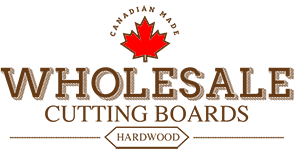Blog
Creative Uses for Cutting Boards Beyond Food Prep: A Complete Guide
Direct Answer Summary
Cutting boards have many creative uses beyond food preparation, including:
- Serving boards (charcuterie, cheese, desserts)
- Home décor (wall art, centerpieces, shelves)
- Organization (mail sorting, key holders, craft stations)
- DIY projects (engraved gifts, memo boards, pet feeding stands)
The best cutting boards for multi-purpose use are hardwood (maple, walnut), 1.5″ thick or more, with a smooth finish. Avoid plastic for decorative uses and bamboo for heavy-duty projects.
Detailed Breakdown
1. Best Alternative Uses for Cutting Boards
A. Serving & Entertaining
| Use Case | Best Board Type | Pro Tip |
|---|---|---|
| Charcuterie displays | Large hardwood (18×12″+) | Use contrasting wood tones for visual appeal |
| Cheese boards | Medium maple/walnut | Include cheese knives and honey pots |
| Dessert platters | Light-colored maple | Add parchment paper for easy cleanup |
| Sushi/sashimi serving | Edge-grain hardwood | Chill board first for freshness |
Why this works:
- Wood is naturally antimicrobial (better than plastic for food)
- Thick boards prevent wobbling during serving
- Neutral background makes food colors pop
B. Home Décor Projects
| Project | Materials Needed | Difficulty |
|---|---|---|
| Rustic wall sign | Sandpaper, stencils, wood stain | Easy |
| Floating shelf | Brackets, wood screws | Moderate |
| Candle holder | Drill, taper candles | Easy |
| Photo display board | Clips, adhesive hooks | Easy |
Key consideration:
- For non-food uses, seal with polyurethane (not food-safe)
- Sand rough edges for safety
- Use food-grade oil if repurposing back to kitchen use
2. Choosing the Right Board for Alternate Uses
Material Comparison Chart
| Material | Best For | Avoid For | Lifespan |
|---|---|---|---|
| Hardwood (Maple) | All decorative uses, heavy serving | Outdoor use | 10+ years |
| Bamboo | Light serving, crafts | Wet environments | 5-7 years |
| Plastic | Workshops, kids’ crafts | Presentation | 2-3 years |
| Glass/Marble | Cold food serving | Knife use, DIY projects | Fragile |
Size Recommendations
- Small (8×12″): Coasters, jewelry organizers
- Medium (12×18″): Standard charcuterie, entryway
- Large (18×24″+): Wedding cake stands, workshop
3. Step-by-Step DIY Projects
A. Chalkboard Menu Board
- Sand existing cutting board smooth
- Apply 2 coats chalkboard paint (dry 24 hours)
- Condition with chalk side rub before use
- Mount with sawtooth hanger
Materials cost: $15-$20
B. Floating Shelf
- Choose board at least 1.5″ thick
- Install hidden bracket system
- Secure to wall studs
- Style with books/plants
Time required: 45 minutes
Common Questions Answered
Q: Can I use the same board for food and crafts?
A: Not recommended. Once used for non-food purposes, dedicate it to that use only for safety.
Q: How to make cutting boards last longer for decor uses?
A: Apply food-safe mineral oil monthly if unfinished, or polyurethane for permanent decor pieces.
Q: What’s the best wood for engraved gifts?
A: Maple or cherry – they show laser engravings clearly without excessive burning.
Actionable Recommendations
For restaurants: Use branded cutting boards as signature serving platters
For homeowners: Repurpose old boards as kitchen organization tools
For crafters: Buy unfinished boards for custom projects at half the cost of pre-made decor
Where to get quality boards: Wholesale AP offers food-grade and craft-ready boards in 12+ sizes.
